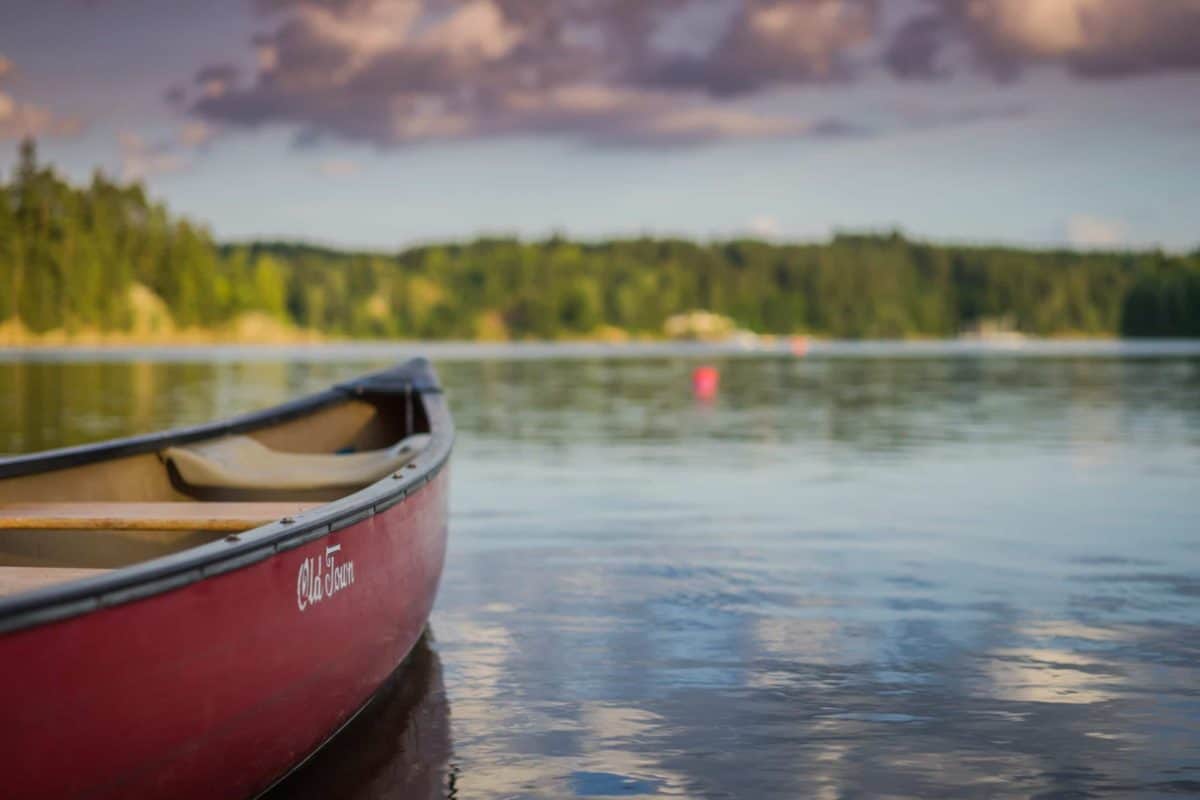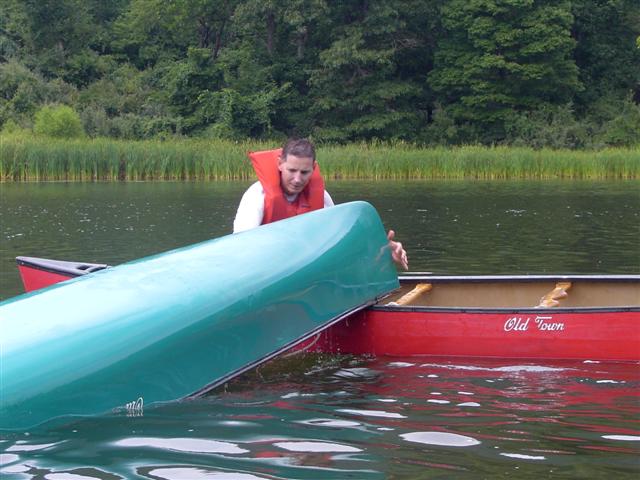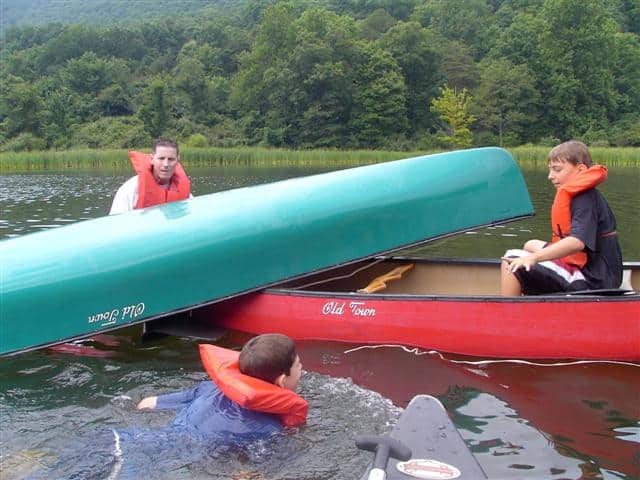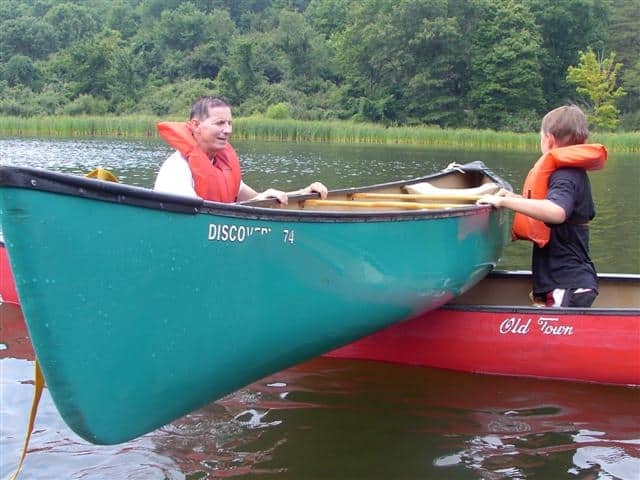This content builds on my How to Get Started Canoeing article, and is followed by the Advanced Paddling Skills post. Learn progressively more advanced canoe strokes, rescues, and safety tips to become confident in waves, rapids, or far from shore. Follow the whole series!
Table of Contents
Intermediate Canoe Paddle Strokes
I’m assuming you’ve already mastered the basic strokes, or at least read about them. Those strokes are the forward and reverse, as well as the c-stroke taught in the basic paddling skills article. If those sound unfamiliar, take another read through the basic paddle strokes section.
Imagine you’re heading down some rapids in a canoe, when you suddenly spot a shallow rock directly ahead. There isn’t time for the rear paddler to sweep, so the bow paddler must skip the boat sideways. Either a pry or draw will suffice.
Pry Stroke
To pry, jamb your paddle in the water vertically right next to the boat, with the blade parallel to the length of the canoe. Now pull the handle across the boat, levering the handle against the gunwale, like you’re prying up a nail with a large pry bar.
This motion will push the boat sideways, away from the paddle.
Draw Stroke
The draw stroke is the opposite, pulling the boat towards the side you’re paddling on. Hold the paddle vertically, with the blade parallel to the length of the boat. Reach out good and far from the boat, and stick the paddle in the water, still vertical. Then pull the paddle in, towards the boat, while still holding it vertical.
Be careful, as you’ll need to yank the paddle out of the water before it comes too close. The inertia of the moving water can suck your paddle under the hull of the canoe, easily ripping it right out of your hands. This is far more likely on a swift river, but can happen even on still water.
Cross-Draw
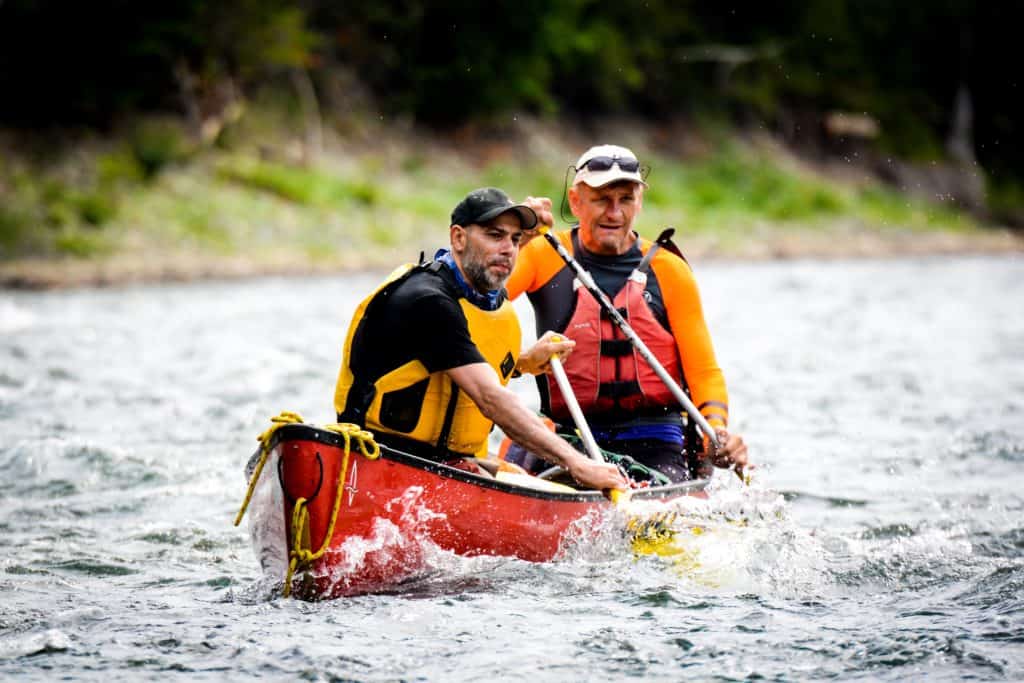
A variation of the draw is the cross-draw. You reach across the boat and perform a draw on the far side of the boat, without switching grip.
I’ve only used this a few times, as it’s pretty awkward.
But if you need to scoot the boat towards the side opposite where you’re paddling because it gets shallow or there’s a rock, sometimes a pry is just going to smack your paddle on the obstacle you’re trying to avoid.
J-Stroke
The J-Stroke is a normal forward stroke with a pry tossed on the end. This stroke is helpful for sharing a canoe with someone smaller or less-skilled. It lets you course-correct for the natural tendency of the canoe to turn away from the stronger paddler’s side.
Just paddle normally, but before pulling the blade out of the water, turn it 90 degrees to be parallel with the canoe. Then do a small pry before pulling your blade out of the water and resetting. It’s a little more mental work, and takes a bit of practice, but it sure beats switching which side you’re paddling on every few seconds. Camp counselors use this stroke almost exclusively, as they’re often paddling with little eight-year-old campers.
Intermediate Canoe Rescues
As a refresher from How to Get Started Canoeing, anytime you swamp a canoe, you need to dump the water, right the boat, and get back in. We’ve already covered how to do this in shallow water or near shore. Now it’s time to move on to deeper water.
How to T-Rescue a Canoe

Lining up the boats 
Starting to lift the bow 
Pulling the bow across 
Capsized boat empty of water, upside down 
Righted capsized boat 
Sliding canoe back into the water 
Preparing to help paddlers back in to canoe. 
Holding canoe steady while hauling up the paddlers
One method is the T-Rescue, great for paddling on lakes too deep to stand in with another canoe. Line the upside-down boat up perpendicular to the right-side-up boat, pointing the tip of the upside-down boat at the middle of the rescue boat. Work together to get as many as four people involved in the rescue.
Those in the water push down on the far end of the water-logged canoe, while those in the boat pull it up and across the rescue boat. Keep scooting it until the canoe being rescued is balanced upside-down across the rescue boat, then slowly and carefully roll it back upright.
Slide the canoe back into the water, now upright, and pull it alongside the rescue boat. The rescuers hold the boat stable while helping those in the water climb back in.
Solo T-Rescue (for no reason)
With a little muscle and persistence, a single fit person can pull off a T-Rescue and re-entry without any help. Why they would be in possession of two unmanned canoes in the middle of a lake is questionable at best. To solo from the water, position yourself next to the middle of the rescue boat, and hold onto its gunwale. Lift the tip of the upside-down canoe up onto that same gunwale.
Slowly scoot the boat, pulling on the gunwale of the rescue boat for leverage. Be very careful with rolling the boat.
Solo re-entry of a canoe is tricky, as you’ll have to come up over the side, but quickly get your weight centered to avoid flipping it. I kick hard to propel my body up as high as I can, then put one hand on the near gunwale and one on the far, pause to get my balance, and slowly haul myself up.
Kayak Solo Reentry
Kayak solo reentry is best done coming up over the bow, staying low and straddling the boat. Once you’ve mounted it, scoot your torso down the length of the boat, past the cockpit. Once your feet fall into the cockpit, reverse your scoot back towards the bow to get more of your body down in the cockpit. Stay as low as you can, roll over and get yourself properly situated.
What’s Next?
Ready to try out your kayaking skills? Check out my article How and Where to Rent a Kayak to know what to bring, and what to expect on your outing!

